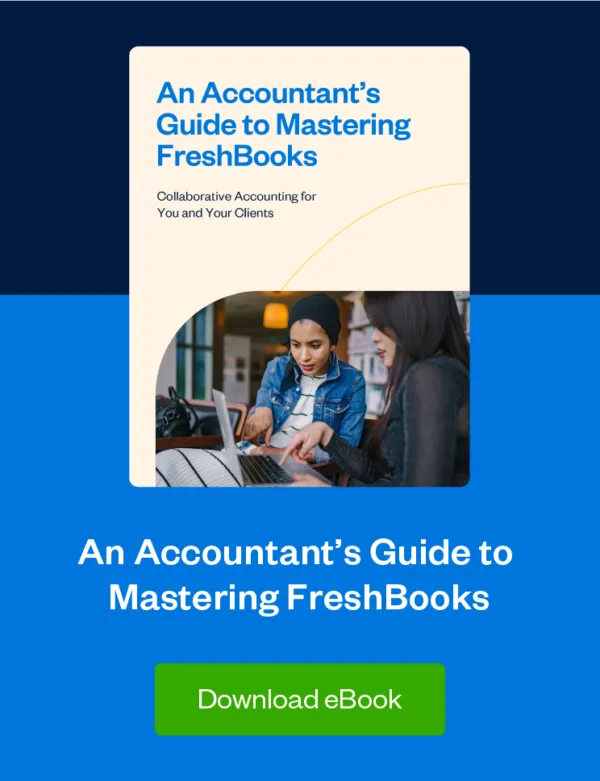Remove the friction by remaining flexible to your client's preferred software.

I was the co-founder of an accounting firm for almost 6 years. During that time, I was proud that my team developed a seemingly perfect workflow, built around our accounting software of choice. I thought this approach made us more efficient.
Now that I’ve stepped away from the firm and can look back on that time more objectively, I see that it actually created some truly damaging client experiences, or what I call “high-friction experiences.” The truth is, the workflow and tech stack we designed was perfect for us, but often not perfect for the client.
As accounting professionals, I believe it’s up to us to be flexible. Both in terms of the accounting tech stack, and in adapting to the software and workflows our clients are most comfortable with.
Advisor vs. Client Support
At my firm, invoicing was where we saw most of the high-friction experiences. Our clients had to create their invoices using the accounting software my team used. However, even our most tech-savvy clients dreaded logging in to this complex accounting software to do simple tasks.
Because of this, I often felt like I was babysitting my clients. I had to remind them each month to submit their invoices. And “I don’t know how to enter this type of invoice in the software” was a common response. Without the invoices entered properly, I couldn’t do my job as their advisor. As a result, I felt more like a support person. I’m sure my clients were also dissatisfied because they didn’t want to be invoicing using software they didn’t understand.
Accountants and bookkeepers provide an immense amount of value, and expect to be paid fairly for their services. When my clients didn’t enjoy working with me because of friction in the workflow, it was harder for them to see that value. And in turn, justify paying for those services. In hindsight, I wish I could have shown them an accounting software that was built for business owners, like FreshBooks. I needed a platform intuitive enough for my clients to use, while still providing me with all the data I needed for my reporting and analysis.
How I Met FreshBooks
FreshBooks started in 2003 with a focus on invoicing. I got certified in FreshBooks in 2015 and at that time, viewed it primarily as an invoicing tool.
In 2016, FreshBooks launched an entirely new platform. It now includes double-entry accounting, bank feeds, financial reports, and all the other features that make it a complete accounting software.
Since introducing these features, FreshBooks has been the top choice among business owners for accounting software. New enhancements are routinely added to the platform, including the launch of the Accounting Partner Program. If you’re an accountant like me, you may have even missed the initial rollout of new features in 2016. I’ve since learned how useful the platform is to a broad range of clients. Additionally, the continued developments are influenced by the growing number of accountants and bookkeepers in the FreshBooks community.
Choosing the Right Accounting Software
Business owners lean on accounting professionals to tell them which software to use. I believe accountants should review a client’s needs as a business, check out what software they’re already using, and make a recommendation based on what will fit them best.
There has been an explosion of shiny new app integrations. The overwhelming number of options has resulted in app fatigue for accountants everywhere. But choosing accounting software like FreshBooks will ultimately simplify your tech stack. It works well with key integrations and the client will spend most of their time on the accounting platform, not the add-on apps.
When it comes to your work, the goal should be to keep a consistent tech stack of a select few apps like Gusto, Roger.ai, or Malartu that work for your firm alongside your client’s accounting software. This way, you can remain flexible and switch out that core accounting software depending on the needs of the client.
Selecting the right accounting software for your clients starts with familiarizing yourself with the options that are out there. When it comes to exploring and learning how to use FreshBooks, that process begins with going through the FreshBooks Accounting Professionals certification. The training starts with an overview of the product’s overall functionality. From there, we identify which features your clients will use most. After that, we dive into bookkeeping and accounting workflows, which clients are the right fit for FreshBooks, app integrations, and the benefits of the program. Our goal is simple. To help you understand if the product would benefit your clients and in turn, be a fit for your practice.
Recognizing When Your Client Needs Help
Part of building the right tech stack for your business should include recognizing when something isn’t working for your client. No one likes to admit when technology just isn’t clicking for them. In fact, you should assume that your clients won’t come to you with a problem. Instead, check in regularly to show your commitment to giving a great client experience, and proactively offer training and resources to help them manage the tech you think is right for their business.
When Is FreshBooks the Best Choice for a Client?
There are a lot of features and integrations in FreshBooks that are especially powerful for business owners. This is not an exhaustive list of criteria. But if your client checks one or more of the boxes below, FreshBooks would likely be a great fit.
Your Client Does a Lot of Invoicing
FreshBooks started out as an invoicing platform 19 years ago. This means it now has the most robust feature set around creating invoices, including customizable templates, reminders, multiple currencies, and more.
Your Client Requires Time Tracking
A lot of service-based businesses require time tracking for the business owner, employees, or contractors. With FreshBooks, you can handle time tracking directly within the platform or mobile app. This helps track whether a project is still within budget.
Your Client Creates Estimates and Proposals
This is where FreshBooks offers a big advantage over other accounting software—you can create and send estimates and proposals inside the app. This generates a project in the user’s account with additional project management features.
Your Client Uses Zoom to Deliver Services
We’re all still on Zoom a lot these days, and your clients might be using it to deliver services. Think of all the professionals who bill by the hour—nutritionists, personal trainers, psychologists, and business consultants, to name a few. FreshBooks’ integration with Zoom allows you to automatically send an invoice to the customer after the meeting is over.
Your Client Has an E-Commerce Store
For e-commerce merchants with relatively simple inventory management, FreshBooks offers integrations with apps like Shopify, Squarespace, and Stripe to automatically pull all of that data into the accounting system.
Questions? We’re Here to Help
The Accounting Partner Program was designed for accounting professionals and includes support from a dedicated team of Accounting Specialists, educational resources, and a peer network to collaborate with.
Our team of Partner Consultants is also available to help your firm get the most out of the Accounting Partner Program so you can maximize your clients’ experience.
Get your clients started with a free 30-day trial or contact our team at accountants@freshbooks.com with any questions.

Written by Twyla Verhelst, CPA, Founder of the Accountant Channel, FreshBooks
Posted on September 21, 2020

 5 FreshBooks Features Accountants Love
5 FreshBooks Features Accountants Love Accountants: How to Determine the Best KPIs for Your Clients
Accountants: How to Determine the Best KPIs for Your Clients Welcome to the Accounting Partner Program
Welcome to the Accounting Partner Program






